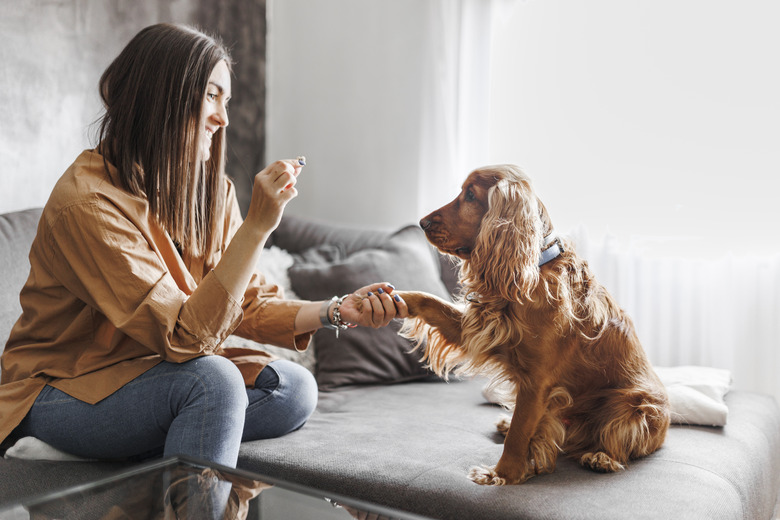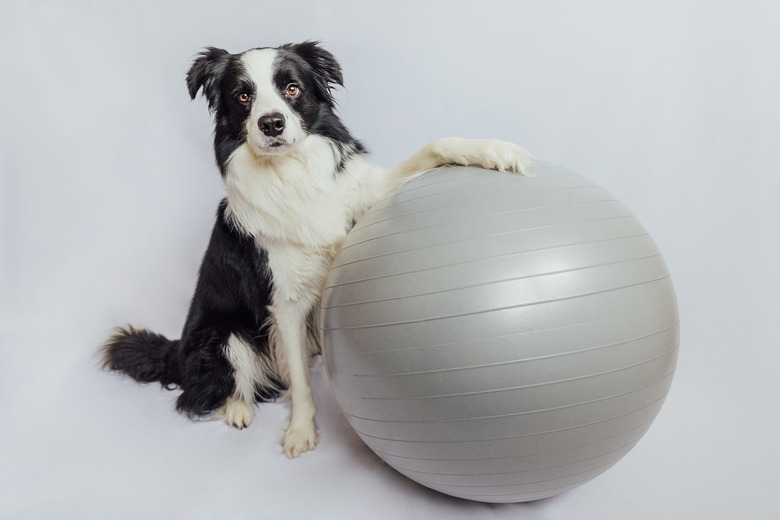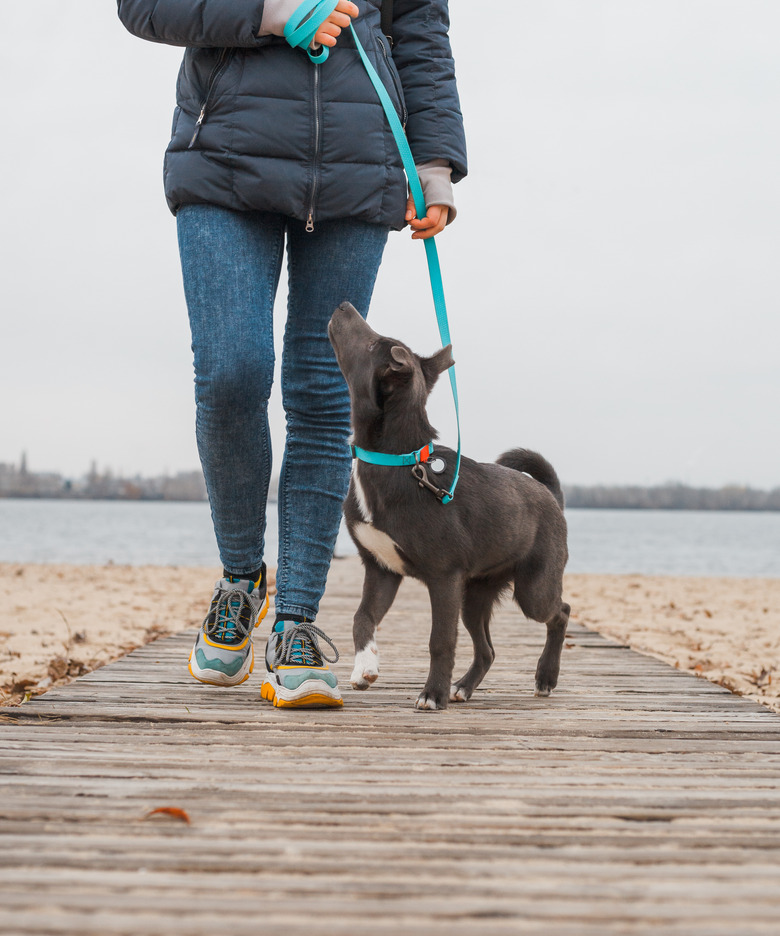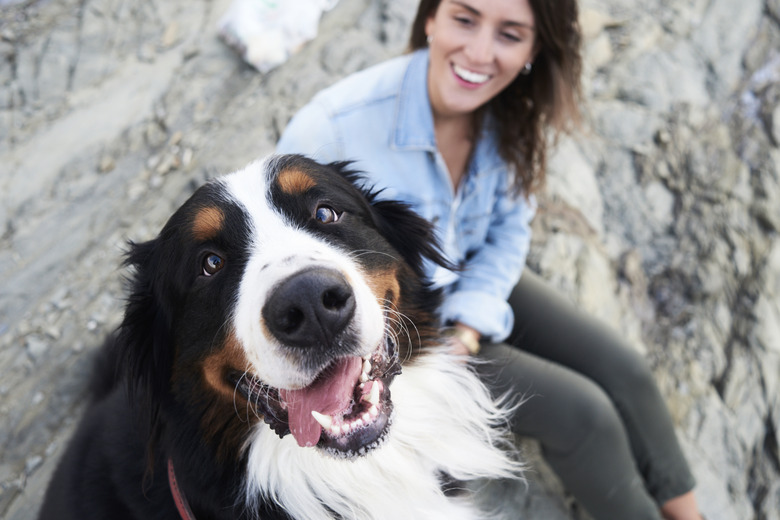What Is LIMA (Least Invasive Minimally Aversive) And Why Should You Use It?
The goal with training dogs isn't to force them to do what we want when we say, it's to find ways to live harmoniously with them, and to find ways to meet each other's needs. Modern dog handlers are moving toward frameworks for interacting with our dogs in a more humane way, and LIMA is one of these frameworks.
What is LIMA, and what does it stand for?
What is LIMA, and what does it stand for?
LIMA is an acronym that stands for "Least Intrusive, Minimally Aversive." In recent years, the term, and underlying meaning has become a training formwork adopted by dog training organizations like the International Association of Animal Behavior Consultants (IAABC) and the Association of Professional Dog Trainers (APDT).
LIMA is really a code of conduct, and a framework of understanding for how we want to frame our work with dogs, and the kind of approach we want trainers who we take classes from or hire to work with us and our dogs privately to utilize.
LIMA in action
LIMA in action
A core component of LIMA is understanding a Humane Hierarchy which centers a dog's emotional well-being while working to create behavior changes. The humane hierarchy create a step-by-step approach towards understanding why dogs behave the way they do, and how to humanely shift the behavior we don't like. Humane Higharchy can in many ways be understood as a dog-learning version of Maslow's Hierarchy of Needs, which you might be familiar with.
Understanding dog behavior
Understanding dog behavior
Looking at canine behavior from a LIMA perspective when a dog displays behavior we dislike or want to change, the first goal should be figuring out why the behavior is occurring. Dogs don't do things to be bad, rather behavior is just a dog doing what comes naturally in response to their environment, stimuli and what has previously been reinforced. To change a dog's behavior, we want to use a LIMA hierarchy of responses exploring ways to prevent the behavior by shifting the dog's environment, give dogs something to do instead of the behavior we don't like, and reward desirable behaviors. This not only eliminates the need for punishment but creates a humane way to create behavioral changes with our dogs.
Listening to your dog
Listening to your dog
A core aspect of positive reinforcement training and LIMA is recognizing that reinforcement is defined by the dog. Only the dog can determine what is reinforcing to them, so learning/training sessions need to be tailored to a specific dog's comfort and desire. When training think about what is reinforcing for your dog and recognize it might be different from other dogs you have or have had. Utilize the treats, toys, and environmental rewards like being released to go run in the yard are most high value to your dog. This will help build a positive relationship with your dog and encourage them to want to continue training with you.
Give dogs more control
Give dogs more control
With LIMA and positive reinforcement training a goal should be to give the dog as much control as possible in life, and training sessions. This is what the "least intrusive" aspect of LIMA means.
Being proactive instead of reactive allows dog parents to create training and lifestyle situations that set dogs up to be successful instead of reacting when they do something we don't like. For example, if your dog takes "people food" off the coffee table, instead of yelling or punishing your dog, give your dog their own high-value chew on their bed or in another area of the house behind a baby gate. Another example would be giving your dog access to walks in secluded areas where they can safely walk on a long leash and stop to sniff and explore their environment instead of always needing to loose leash walk close to you in crowded and potentially stressful areas.
What does "aversive" mean?
What does "aversive" mean?
When approaching training from a LIMA perspective, it's important to think critically about what aversive means to the dog you are working with. Just as our dogs determine what is reinforcing for them, they also determine what is aversive. For example, for some dogs sleeping in a crate is something that they naturally enjoy or has been highly reinforced. For other dogs, including those who have confinement anxiety, a crate could be highly aversive.
Similarly, a loud squeaky toy could be the biggest reward for some dogs, whereas for other dogs who are sound sensitive it could be extremely aversive and something you want to avoid utilizing during training. What isn't up for negotiation is that aversive training tools and aversive techniques such as alpha rolls, prong collars, e-collars/shock collars, physical violence or intimidation are aversive and should not be utilized when training dogs. These tools and techniques are inhumane, and have been proven to be damaging to a dog's wellbeing and their relationship with their owners.
Always avoid punishment
Always avoid punishment
It's important to always avoid punishing our dogs, and to avoid trainers who use aversive tools or techniques to work with dogs. Punishing a dog might temporarily frighten some dogs into stopping behaviors, but it doesn't shift the dog's underlying emotions which led to the behavior. Just like we now know that spanking children is wrong, using physical intimidation or painful training techniques is equally harmful to dogs. Punishing dogs also leads to them emotionally shutting down. Punishment also increases stress and anxiety, and can lead to worsening behavior challenges, or the development of new behavior problems. Even when our dogs do things, we don't like we want to avoid any kind of punishment.
LIMA misconceptions
LIMA misconceptions
A common misconception around LIMA is the idea that if a dog is displaying especially challenging behaviors, someone is justified in using punishment on their dog. A LIMA framework should never be a justification for utilizing punishment or aversive methods.
"Difficult" dogs can be trained utilizing force-free and positive reinforcement methods the same as any other dogs. The goal of working with our dogs under a LIMA framework is to adjust the environment to avoid our dog's triggers of unwanted behaviors. Then, using positive reinforcement techniques teach our dogs behaviors which are incompatible with the behaviors we don't want. We want to meet our dog's where they are at, recognizing their comforts and discomforts, and utilize counter conditioning techniques to support dogs with developing new relationships to previous stressors or triggers,
Difficult things happen
Difficult things happen
Trying to use a LIMA approach when working with our dogs doesn't mean that dogs never experience things that they dislike. For example, your dog might find going to the vet to be an aversive experience because they are scared when there, but your dog still needs to be vaccinated and have regular checkups. LIMA means that you are going to work to make that experience the least aversive as possible. This might mean looking for veterinary clinics that are certified in Fear Free Certified, or who utilize Fear Free handling techniques.
In the United States, dog training is an unregulated industry. Anyone can open a business and call themselves a dog trainer regardless of how much (or how little) experience they have training dogs. This can lead to use of outdated, unscientifically sound training methodologies being utilized.
When looking for a dog trainer, be sure to look for someone who utilizes positive reinforcement techniques and LIMA. Remember, LIMA isn't a specific behavior, but rather it's a framework of how to understand and approach interactions with our dogs while we're training, but also in daily life. Utilizing a LIMA as a framework for training encourages dog owners, trainers, dog walkers, and pet sitters to consider a dog's emotional and physical health and needs in all interactions. This can lead to less conflict in your relationship with your dog, and an easier time working together.
In summary
In summary
LIMA stands for "Least Invasive, Minimally Aversive" and is a framework for working with animals, especially dogs, in a humane way. LIMA can be used by any professional or individual who works with animals. When working with your dog or other pet, always use positive reinforcement and avoid punishment. When in doubt, contact a certified, qualified trainer to help you.



